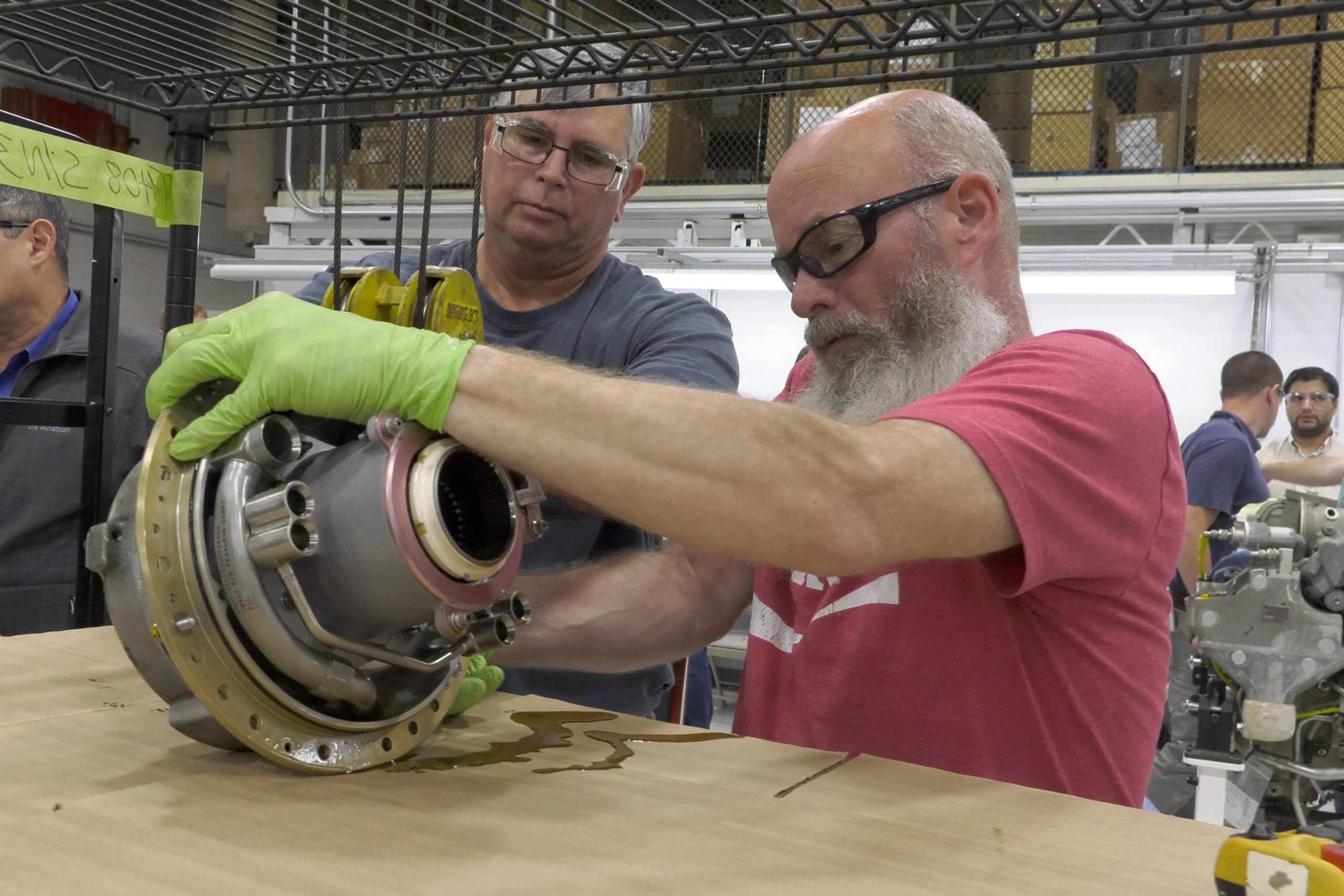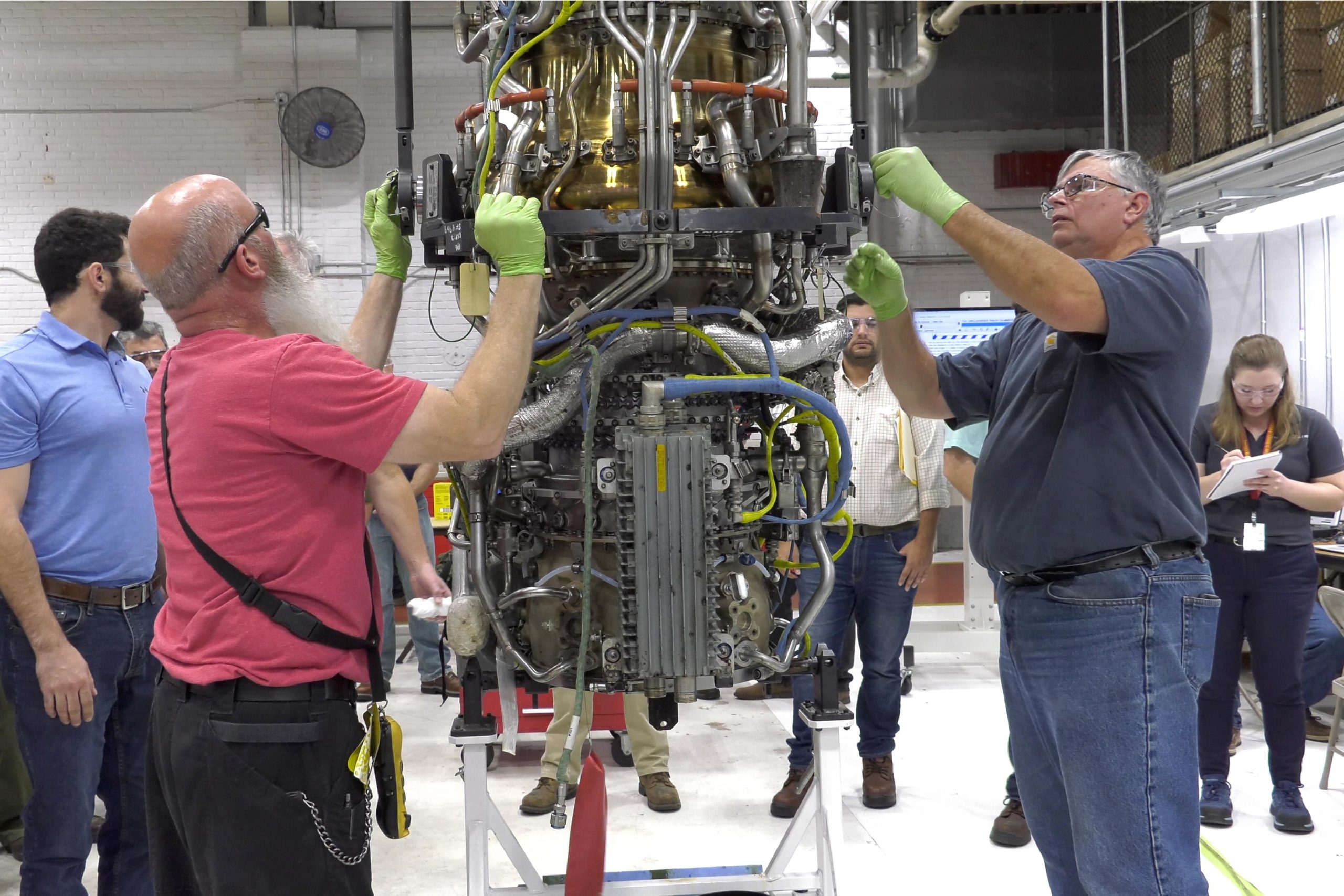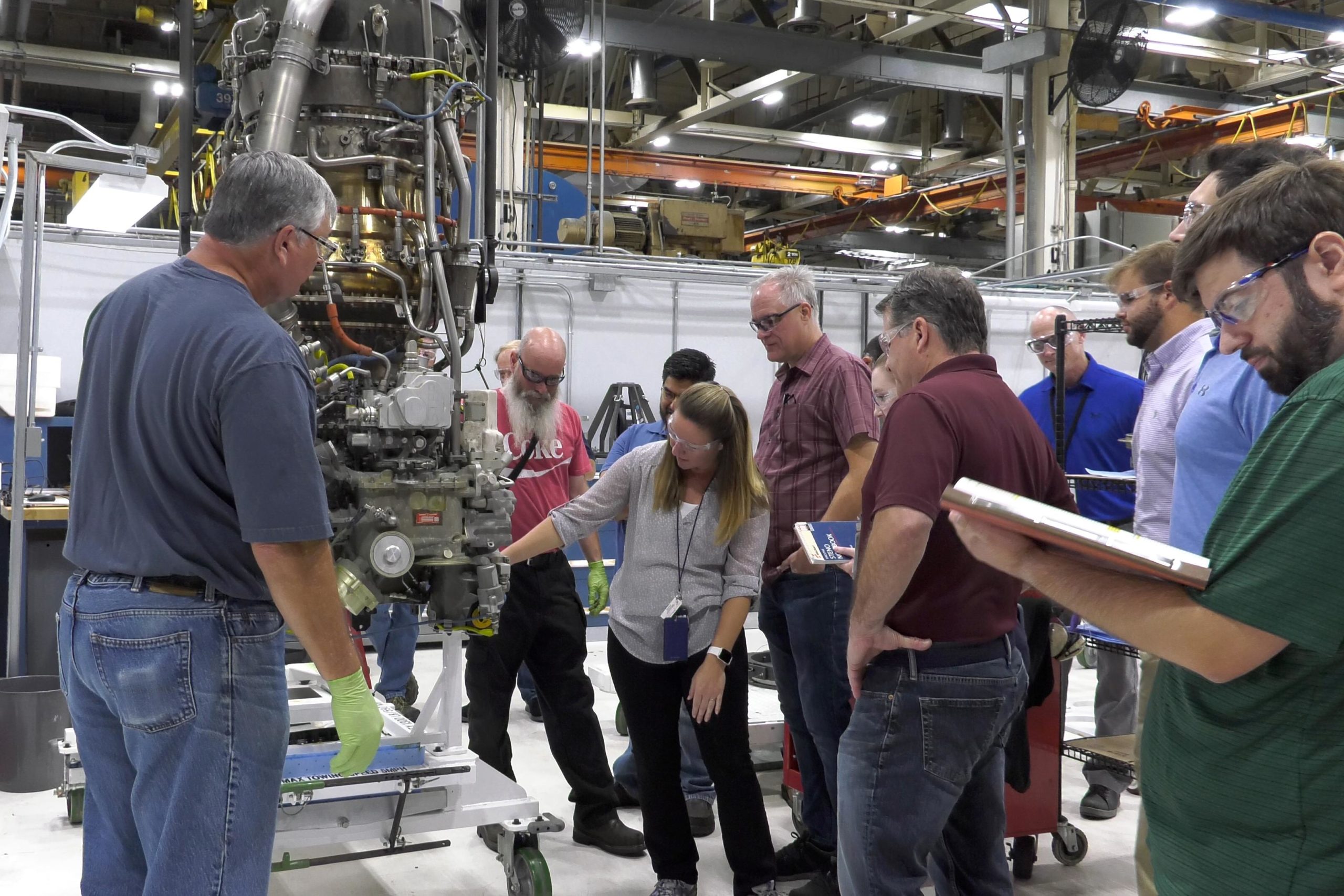In an article published by NAVAIR on December 6, 2022, the arrival of the powerful engine for the CH-53K and its first disassembly at Cherry Point, North Carolina was highlighted.
Fleet Readiness Center East (FRCE) recently opened a new chapter in the depot’s engine program with its first disassembly of the T408 engine, which powers the CH-53K King Stallion helicopter.
The three-day disassembly was a dress rehearsal of sorts, as it gave stakeholders in the T408 engine program an opportunity to ensure everything from technical data to tooling to support equipment meets the needs of the artisans who will work with the full-scale engine program. Two experienced engine mechanics methodically disassembled the massive engine while FRCE engineers and logisticians, along with representatives of Naval Air Systems Command’s H-53 Heavy Lift Helicopter Program Office (PMA-261) and engine manufacturer GE Aviation, observed and collected data to fine-tune the process.
“We were able to bring together all the stakeholders to work through the maintenance manuals and validate that the instructions are good for the depot artisans to be able to tear down, repair and rebuild the engine,” said Christine Haigler, Propulsion Integrated Product Team Lead for PMA-261. “I was really excited to be at FRCE and witness all the collaboration and partnership that’s going on here.”
FRCE Commanding Officer Capt. James Belmont called the disassembly an important milestone in the depot’s establishment of the CH-53K workload. Maintenance, repair and overhaul of the Marine Corps’ new heavy lift capability and its components will soon represent a significant portion of FRCE’s operations.
“This is a huge win for us. Anytime we establish new capability here at FRCE, it gives the artisans, the engineers and the support staff the excitement of meeting the challenges of new workload,” Belmont said. “I’m excited on behalf of all the employees at FRCE to welcome in the CH-53K engine workload, because it represents the future of FRCE here in eastern North Carolina.”
The CH-53K program office requested that capability establishment for the T408 engine be carried out in a three-year “crawl, walk, run” approach. This multi-phase plan will allow FRCE to smooth out any potential trouble spots before moving on to the next phase, according to Heather Carlson, Engine Capability Program Manager for the FRCE Business Office.
“In crawl phase, we should be able to induct an engine, disassemble it and put it back together with brand new parts,” Carlson said. “We won’t be able to repair those parts yet – we won’t have that capability – but we’ll swap it out with new parts and test it. So we’ll be able to get an engine out the door and ready for issue by utilizing new parts, a plug and play method.”
Carlson said during the “walk” phase, the depot will repair the component parts of the engine and reassemble and test it using the repaired parts, while the “run” phase represents full capability to repair and test the engine.
The new T408 production line will be the first FRCE engine shop to use digital maintenance manuals instead of paper books. Carlson said the disassembly provides an opportunity for the artisans who will be working on the engines to recommend changes to the interactive electronic technical manuals (IETM) for the engine program.
“If the process says to remove this part, but it doesn’t say how to do it or it’s missing the required support equipment, we have an opportunity to ask for that information to be included because our artisans need to see that,” Carlson said. “The engine manufacturer owns the updates, so the company can incorporate those changes into the final IETMs that we use when we declare capability.”
The T408 engine mechanics who disassembled the engine said they’re excited at the prospect of working on the Marine Corps’ newest engine.
“I love learning new things. It’s something new and I’m enjoying myself,” said Mark Schexnayder. “There’s quite a big difference with this engine versus the T64 engine. So far the engine design seems simpler and easier to follow.”
Travis Barclay, an FRCE engine disassembler, said he’s looking forward to having an impact on how the T408 engines will be repaired in the future.
“Working on the new engine for the CH-53K is going to be an interesting challenge, especially being on the ground floor of this,” Barclay said. “It’s exciting to be directly involved with a program that’s the future of engine maintenance at FRCE.”
FRCE is North Carolina’s largest maintenance, repair, overhaul and technical services provider, with more than 4,000 civilian, military and contract workers. Its annual revenue exceeds $1 billion. The depot generates combat air power for America’s Marines and naval forces while serving as an integral part of the greater U.S. Navy; Naval Air Systems Command; and Commander, Fleet Readiness Centers.




